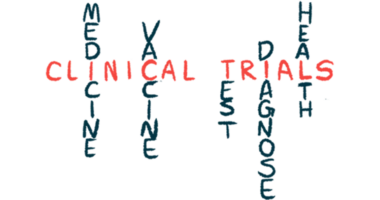Breakthrough Bleeds Likely for Hem A Patients on Hemlibra, Study Finds

Most people with hemophilia A on preventive treatment with Hemlibra (emicizumab) will experience spontaneous or traumatic bleeds at some point, according to a study using real-world data from Israel.
Results also indicated the risk of spontaneous bleeds while on Hemlibra is higher for older individuals.
“Our findings indicate that the risk of bleeding persists despite therapy with emicizumab [Hemlibra],” the investigators wrote. “These data may help clinicians in advising their patients and in planning their management.”
The study, “Real-World Data on Bleeding Patterns of Hemophilia A Patients Treated with Emicizumab,” was published in the Journal of Clinical Medicine. It was funded by Roche, which markets Hemlibra.
Hemlibra is an antibody-based therapy that is approved to reduce bleeding in people with hemophilia A with and without inhibitors, or neutralizing antibodies that can block the activity of conventional replacement therapies for hemophilia A. It works by mimicking the activity of factor VIII, the clotting protein that is missing or is faulty in people with hemophilia A.
While the medication’s safety and efficacy have been demonstrated in clinical trials, data on its use in a real-world setting is still scarce, particularly regarding the type and severity of bleeds that patients experience while on treatment, commonly known as breakthrough bleeds.
Researchers described the breakthrough bleeding patterns of 70 hemophilia A patients, who received preventive treatment with Hemlibra for at least 18 months at the Israeli National Hemophilia Center. Their ages ranged from one month to 74.9 years (median age of 14.6 years), and 28 were positive for factor VIII inhibitors.
Prior to treatment start, patients without inhibitors had an average of four annual bleeds (range, one to 12) while those with inhibitors had an average annual bleeding rate of six (range, three to 10).
Over the 18 months of follow-up, 36 (51%) patients experienced at least one spontaneous bleed, and 43 (61%) at least one traumatic bleed (a bleed caused by an injury), including seven people with only trauma-related bleeding. Joint bleeding, or hemarthrosis, was the most common type of bleed seen in patients with spontaneous and traumatic bleeding episodes.
Researchers conducted statistical tests to look for possible relationships between various clinical factors and the risk of spontaneous bleeds. Yet, no significant relationships were found between the risk of bleeding and prior bleeding rates, or the presence of inhibitors.
However, a significant relationship was seen between bleeding risk and age. Specifically, investigators found the risk of bleeding increased by a factor of 1.029 for every year of a patient’s age.
“In other words, being older was independently associated with an increased likelihood of at least one spontaneous bleeding episode within the 18-month period of emicizumab [Hemlibra] treatment,” the researchers wrote.
Analyses also found no significant differences in the proportion of patients experiencing spontaneous or traumatic bleeds based on treatment timing, that is, closer or further away from Hemlibra’s initiation.
Notably, a subset of 24 patients who had been treated for at least two years had fewer spontaneous bleeds in months 18–24, as compared with months 12–18. However, the researchers noted that this “may be explained by restrictions in mobility and fewer outdoor activities during the COVID-19 pandemic.”







